Abstract
Pattee, P. A. (Iowa State University, Ames) and J. N. Baldwin. Transduction of resistance to some macrolide antibiotics in Staphylococcus aureus. J. Bacteriol. 84:1049–1055. 1962.—By use of phage 80 of the International Typing Series, propagated on appropriate strains of Staphylococcus aureus, two related markers controlling resistance to certain macrolide antibiotics (erythromycin, oleandomycin, spiramycin, and carbomycin) were transduced among a variety of strains of S. aureus. Unlike the markers controlling penicillinase production and resistance to chlortetracycline and novobiocin, the determinants of resistance to the macrolide antibiotics were transduced at normal frequencies (at least 300 transductants per 109 phage) only to certain of the recipient strains. One of the markers studied appears to control an inducible enzyme system which is specifically induced by sub-inhibitory concentrations of erythromycin and which controls resistance to erythromycin, oleandomycin, spiramycin, and carbomycin. The other marker examined confers resistance to erythromycin, oleandomycin, spiramycin, and carbomycin, and shows no evidence of being dependent upon an inducible mechanism.
Full text
PDF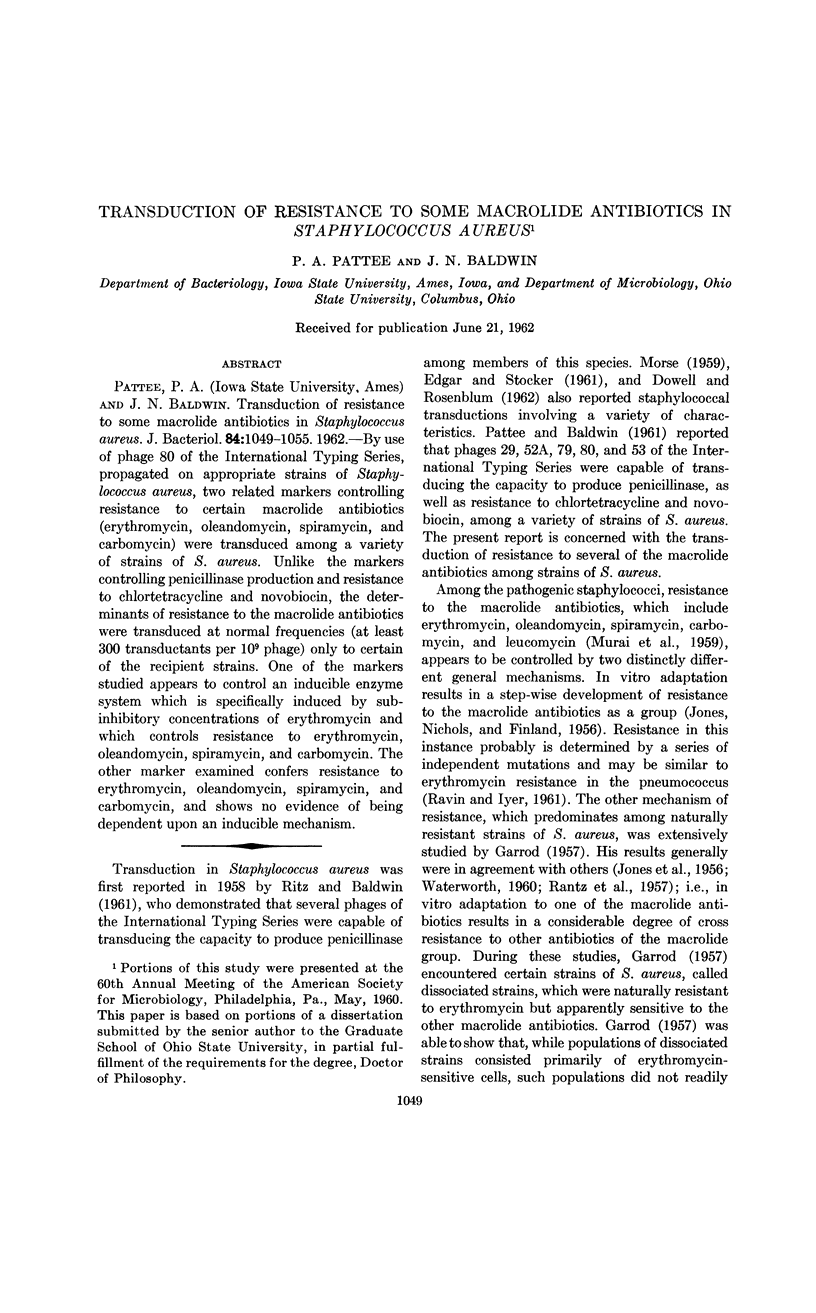
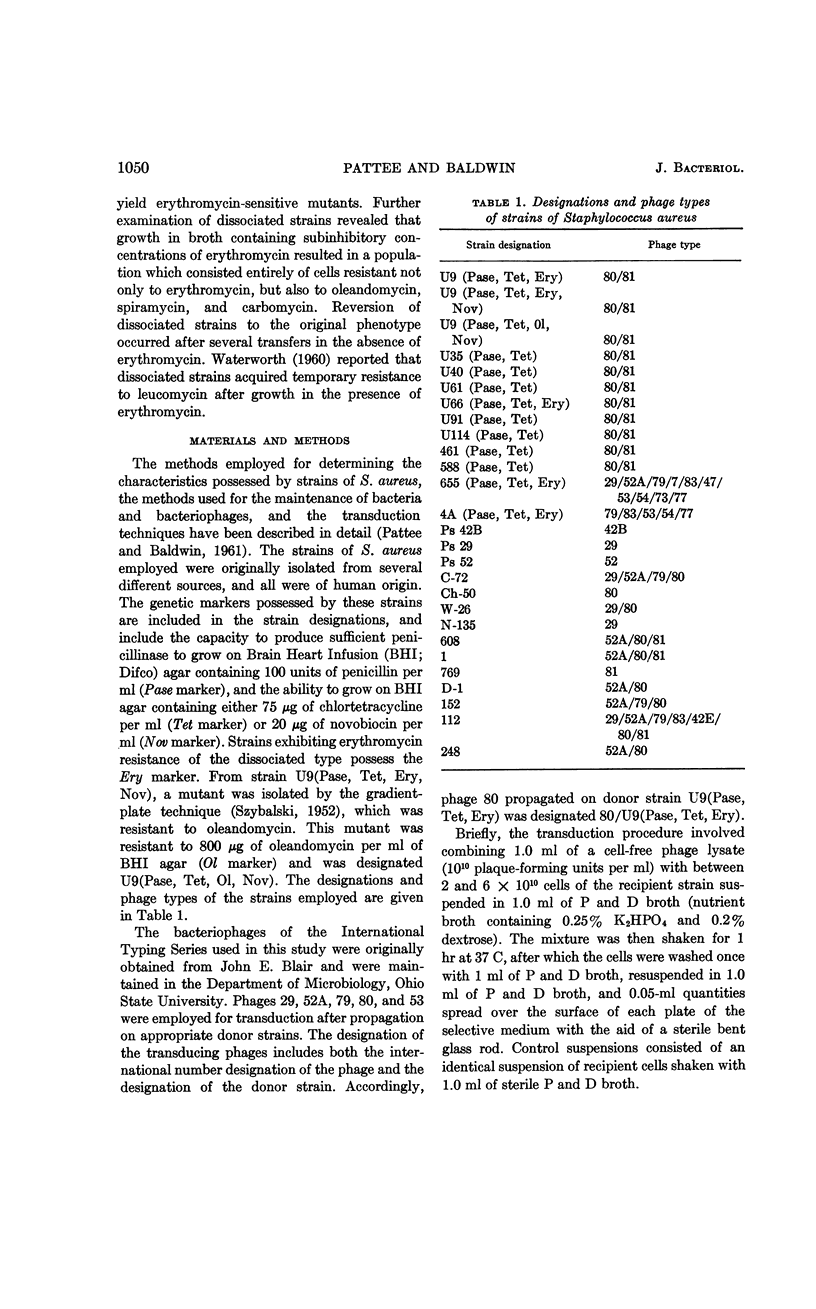
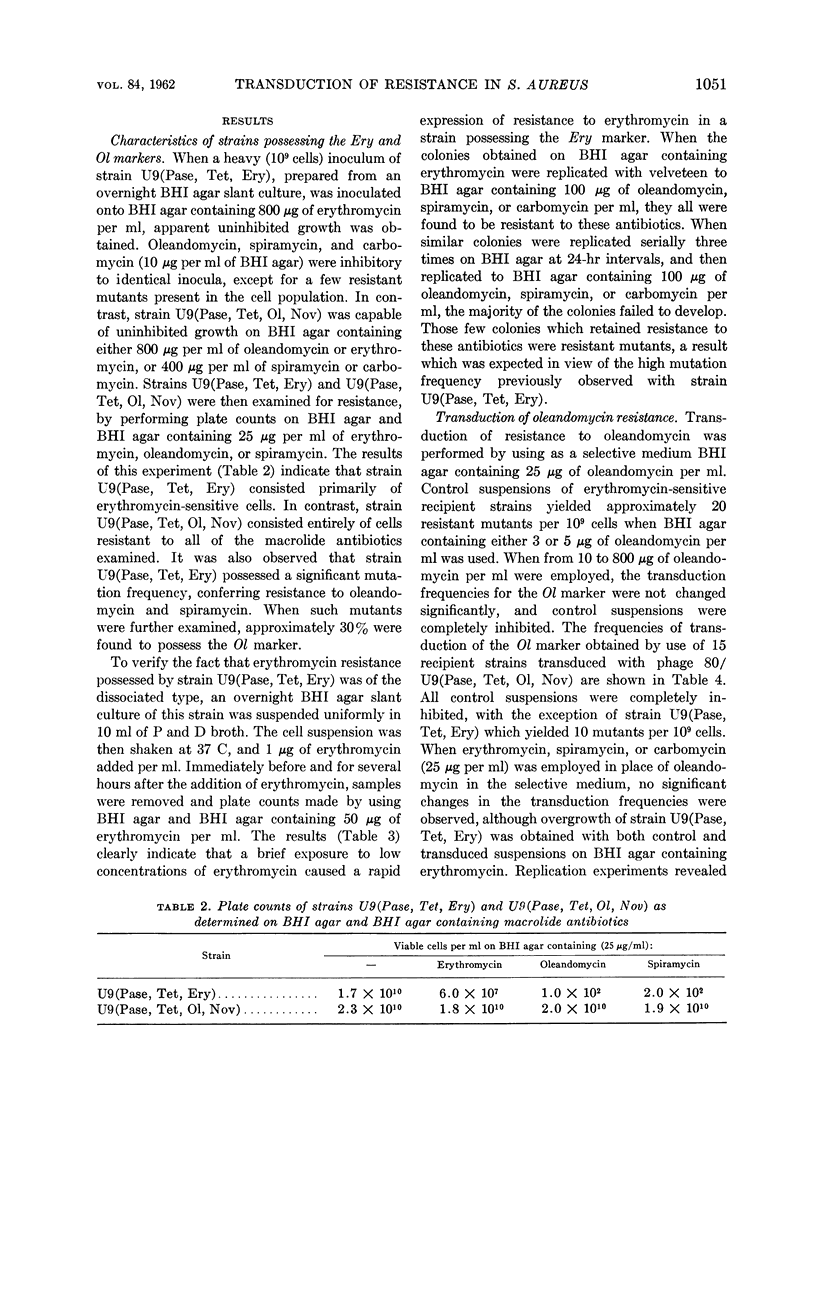
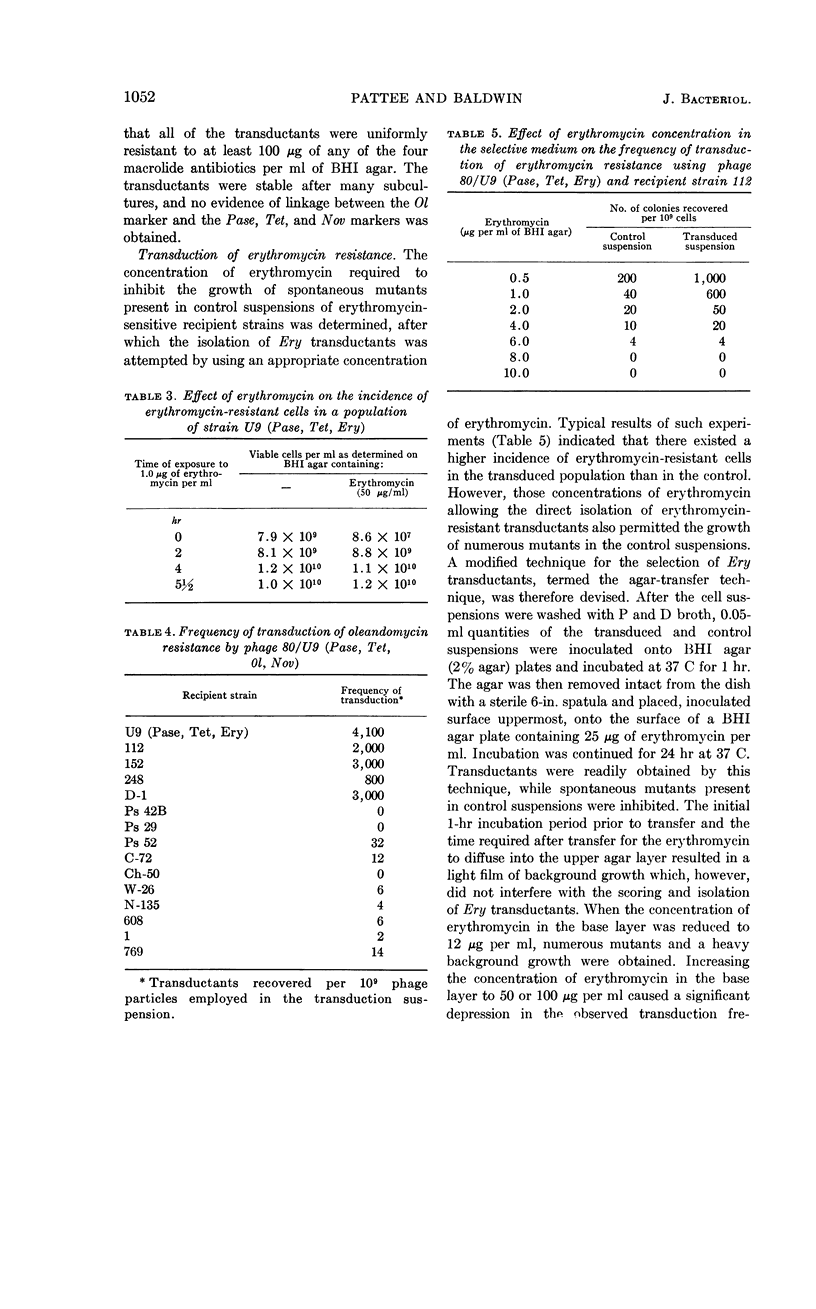

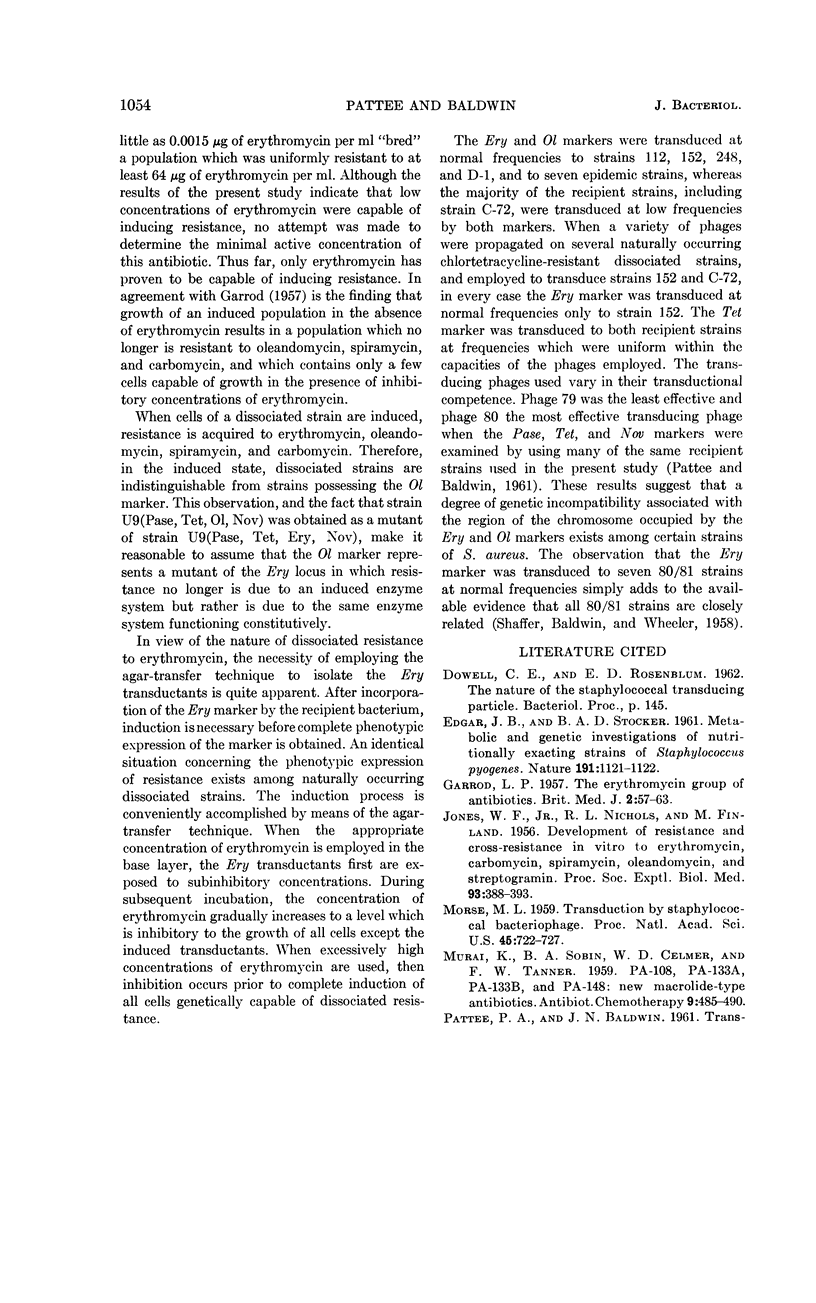
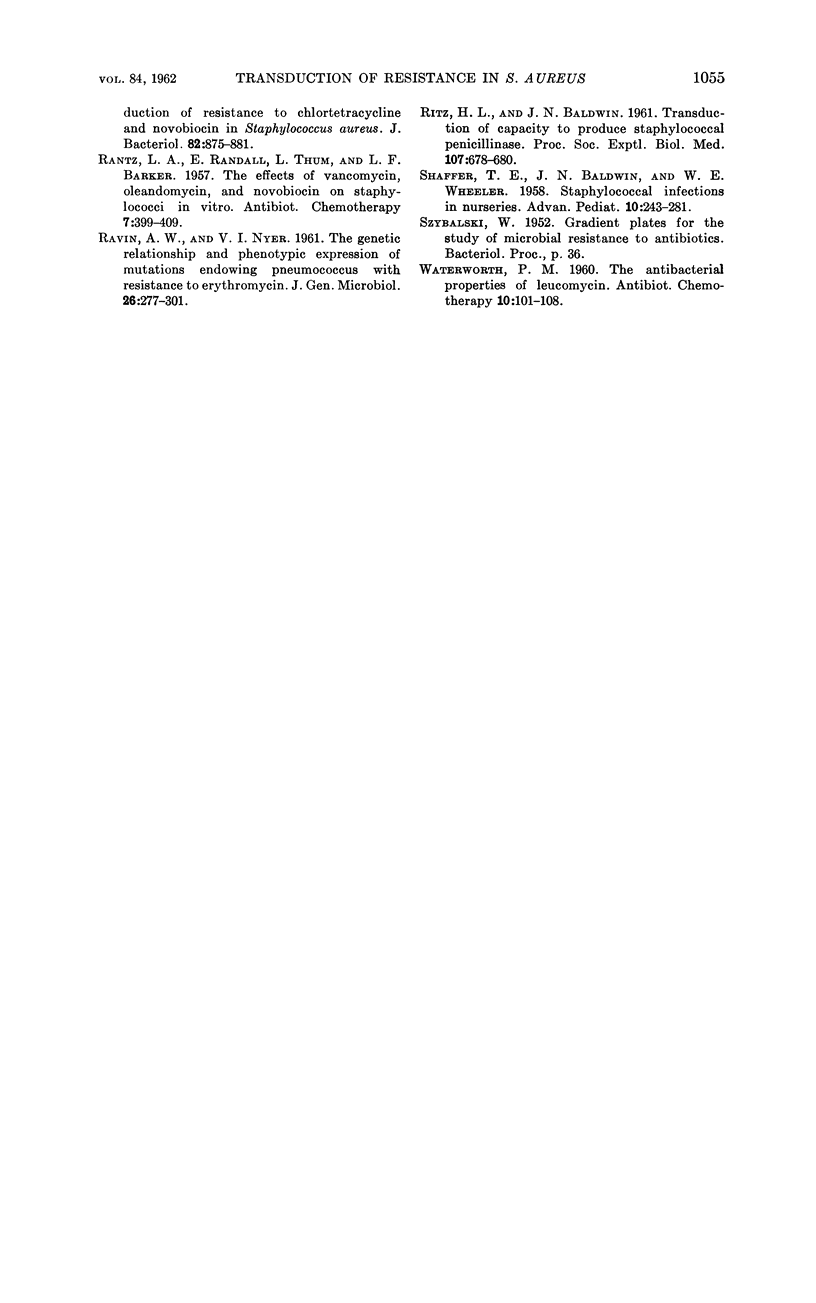
Selected References
These references are in PubMed. This may not be the complete list of references from this article.
- EDGAR J. B., STOCKER B. A. Metabolic and genetic investigations of nutritionally exacting strains of Staphylococcus pyogenes. Nature. 1961 Sep 9;191:1121–1122. doi: 10.1038/1911121a0. [DOI] [PubMed] [Google Scholar]
- FINLAND M., JONES W. F., Jr, NICHOLS R. L. Development of resistance and cross-resistance in vitro to erythromycin, carbomycin, spiramycin, oleandomycin and streptogramin. Proc Soc Exp Biol Med. 1956 Nov;93(2):388–393. doi: 10.3181/00379727-93-22766. [DOI] [PubMed] [Google Scholar]
- GARROD L. P. The erythromycin group of antibiotics. Br Med J. 1957 Jul 13;2(5036):57–63. doi: 10.1136/bmj.2.5036.57. [DOI] [PMC free article] [PubMed] [Google Scholar]
- Morse M. L. TRANSDUCTION BY STAPHYLOCOCCAL BACTERIOPHAGE. Proc Natl Acad Sci U S A. 1959 May;45(5):722–727. doi: 10.1073/pnas.45.5.722. [DOI] [PMC free article] [PubMed] [Google Scholar]
- PATTEE P. A., BALDWIN J. N. Transduction of resistance to chlortetracycline and novobiocin in Staphylococcus aureus. J Bacteriol. 1961 Dec;82:875–881. doi: 10.1128/jb.82.6.875-881.1961. [DOI] [PMC free article] [PubMed] [Google Scholar]
- RAVIN A. W., IYER V. N. The genetic relationship and phenotypic expression of mutations endowing Pneumococcus with resistance to erythromycin. J Gen Microbiol. 1961 Oct;26:277–301. doi: 10.1099/00221287-26-2-277. [DOI] [PubMed] [Google Scholar]
- RITZ H. L., BALDWIN J. N. Transduction of capacity to produce staphylococcal penicillinase. Proc Soc Exp Biol Med. 1961 Jul;107:678–680. doi: 10.3181/00379727-107-26726. [DOI] [PubMed] [Google Scholar]
- WATERWORTH P. M. The antibacterial properties of leucomycin. Antibiot Chemother (Northfield) 1960 Feb;10:101–108. [PubMed] [Google Scholar]


